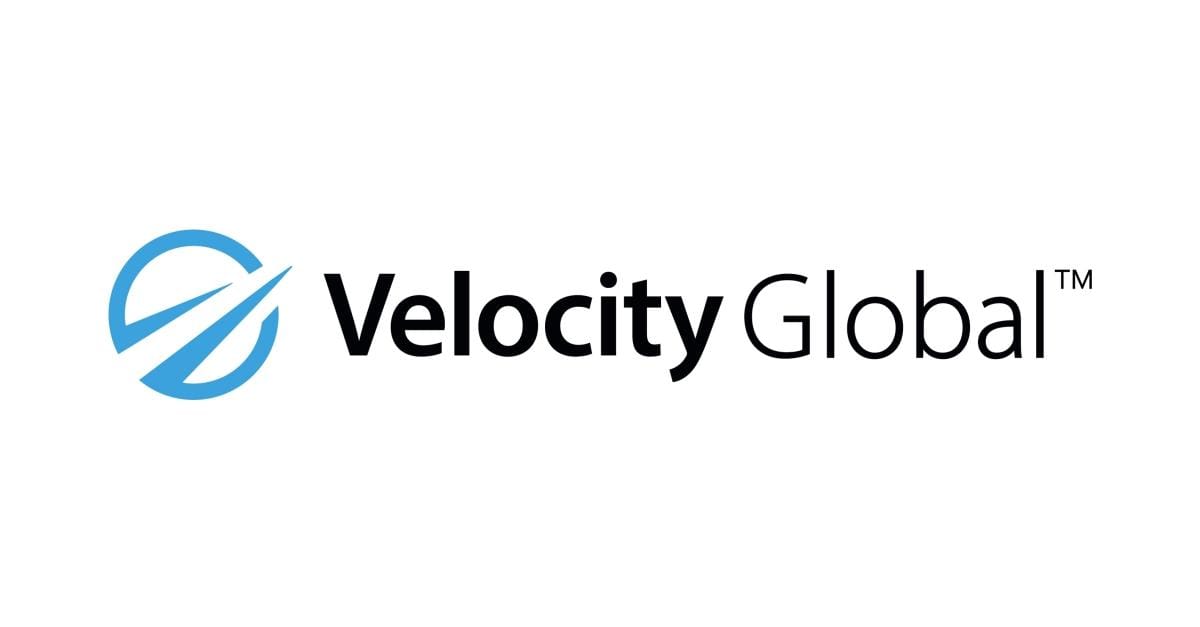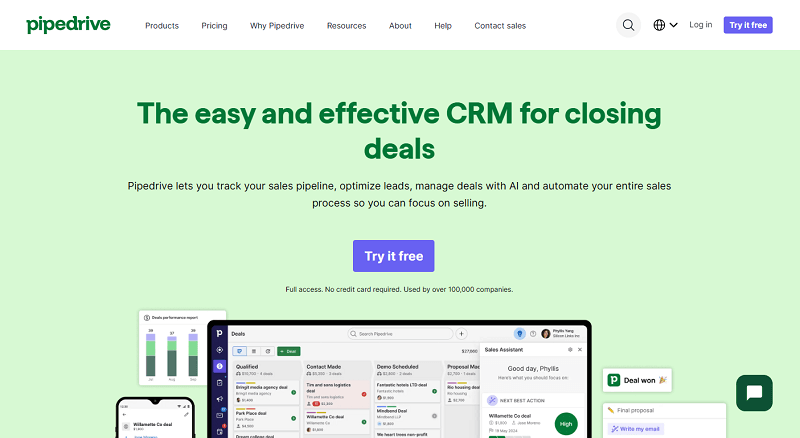You’d agree with me that getting leads isn’t the real problem; turning them into customers is. Every entrepreneur’s worst nightmare is pouring money into traffic, forms, and even a hardworking sales team, only to feel stuck when those leads don’t convert.
Chances are, it’s not the number of leads, it’s what happens after your prospects show up.
If you’re tired of guessing and want a clear strategy, this post is your reality check. Below, we’ve pulled together the latest Lead Management Statistics 2025 that reveal where the market is heading. Use these insights to stop guessing and start building a lead management strategy that converts.
Key Insights: General lead management statistics 2025
- The market, estimated at $15 billion in 2025, is projected to grow at a Compound Annual Growth Rate (CAGR) of 12% from 2025 to 2033.
- 50% of marketers say finding and converting leads is their number one priority, outranking brand building or customer retention.
- On average, businesses pull in roughly 1,877 new leads each month, but only about 81% qualify as marketing-ready.
- 68% of marketers say social media marketing has helped them generate more leads.
- Nurtured leads generate 20% more sales opportunities.
- 97% of people ignore cold calls
Social Media Lead Management Statistics
As of February 2025, 5.56 billion individuals worldwide were internet users, which amounted to 67.9 per cent of the global population. Of this total, 5.24 billion, or 63.9 per cent of the world’s population, were social media users.
- 68% of marketers say social media marketing has helped generate more leads (Social Media Examiner)
Nearly 70% of marketers believe social media to be a true pipeline driver. Social media has advanced far beyond meaningless metrics like likes and shares, as evidenced by the fact that businesses are actively witnessing leads become opportunities.
- LinkedIn is cited by more than 80% of marketers as their most effective B2B platform. (LinkedIn)
Thus, according to four out of five B2B marketers, LinkedIn is effective. Not giving LinkedIn top priority when selling to businesses is like leaving the best fishing spot unoccupied while everyone else is catching fish.
- LinkedIn is 277% more effective at generating leads than Facebook and X (Twitter).
This statistic is the game-changer. LinkedIn produces more than 2.5 times as many actual leads that convert as Facebook and X, despite the fact that both platforms can be useful for reach. It is the distinction between irrelevant business chatter and productive dialogue. HubSpot
- 66% of marketers generated new leads by spending just 6 hours per week on social media. (Social Media Examiner)
The lesson here? You don’t need to spend every waking hour posting to see results. Even one focused hour a day, if consistent, can produce a steady flow of qualified leads.
- 53% of marketers use social media to generate leads. (Social Media Examiner)
More than half of all marketers rely on social as part of their lead strategy. If you’re not in that half, you’re likely losing ground to competitors who are capturing attention where your audience already spends time.
- 62% of marketers say LinkedIn generates leads for them. (The shelf)
LinkedIn has cemented itself as the B2B platform. Its targeting, professional network, and credibility make it the number one choice for marketers looking for quality leads over sheer volume.
Content Marketing & Lead Management Statistics 2025
Content serves as your pipeline’s fuel, not simply background noise. It generates leads more quickly, more affordably, and with better long-term returns than nearly anything else.
- Content marketing is 62% less expensive than typical outbound marketing while producing 3× as many leads. (Adam Connell)
While advertisements and cold calling drain budgets, content continues to generate results long after it is published. It’s similar to sowing seeds that bear fruit.
- By 2025, the content marketing market is expected to reach $565 billion. (Demand metric)
That is growth, not hype. Businesses are investing more in content since it is becoming more than just a “nice-to-have” and is actually driving business.
- 72% of businesses credit content with generating more leads, while 58% of B2B marketers say it directly influences revenue. (SEO.com)
Content isn’t just for awareness; it’s directly tied to the sales process. It can shorten the time from first click to closed deal.
- 84% of B2B marketers use content for awareness, 74% for lead gen, and 62% for nurturing. (Martech.org)
It’s how prospects discover you, stay engaged with you, and eventually trust you enough to buy.
- Websites with blogs have 434% more indexed pages than those without. (Sopro)
More pages results to more chances to rank on Google, and then to more organic leads. A simple blog can multiply your visibility without extra ad spend. This is because the more blogs you put out, the farther google algorithm pushes your site.
- 73% of B2B and 70% of B2C marketers use content marketing as part of their marketing strategy. (Zendesk)
This represents roughly 75% of the marketing world. Whether you’re selling to businesses or consumers, purchasers demand value before they buy, and content provides it right away. If you don’t use it, you’ll be competing with businesses that have already built trust before the first sales presentation.
- 50% of marketers plan on increasing their investment in content marketing. (Content Marketing Statistics)
This year, half of marketers plan to increase their content budget. Why? Because the ROI is proven, content is less expensive than advertising yet continues to provide results long after it is published.
This means that the competition for attention will only get tougher. If you don’t ramp up your content efforts today, you risk being overshadowed by brands that are doubling down.
- 79% of the content marketers stated that their content quality increased with the help of AI (Semrush)
AI is here to stay and aims to make generating content faster, not to replace people. To focus on strategy and storytelling, marketers are adopting tools to refine drafts, optimize for search engines, and generate ideas.
The outcome? Streamlined processes, reduced bottlenecks, and content that genuinely performs better among readers and in search results. Those who disregard AI risk becoming less competitive and slower.
Email Marketing Lead Management Stats (2025)
- 73% of B2B buyers prefer email as the vendor outreach channel (SellersCommerce research)
Nearly three out of four B2B customers want to hear from you via email. It’s not just marketing it’s how they expect to be reached.
- 75% of B2B businesses report “good to excellent” ROI from email prospecting; only 3% see negative returns. (Demand Gen Report)
Email outreach works reliably. Most get a strong return, and very few lose. Its good you know what stategy works best for your business.
- 4.6 billion email users projected worldwide in 2025 a jump of ~600 million in five years Statista (2024 report)
Email is a massive audience. If you’re not using email, you’re missing out on connecting with more than half of the online world.
- 73% of surveyed marketers say emojis in subject lines improve performance (Selzy)
Emojis are not just for fun, they grab attention and drive higher open rates. Just don’t overuse them, or they lose their punch.
- Beauty & cosmetics ecommerce emails saw open rates climb from 20.5% to 23.8% year-over-year. Omnisend industry benchmarks (2025)
That’s a big jump, showing how optimised messaging and design are making inboxes more engaging in certain niches.
- 59% of B2B marketers say email is their most effective channel for revenue generation (Code Crew, 2024 report)
Beyond opens and clicks, email is driving real revenue for B2B brands making it the #1 channel they rely on for bottom-line growth.
Lead Nurturing for Lead Management Statistics
- Nurtured leads produce 20% more sales opportunities than cold leads. (Demand Gen Report)
That extra attention sets deals into motion letting prospects warm up instead of ghosting you.
- Companies that nurture leads get 50% more sales-ready leads at 33% lower cost. (Forrester & Marketo)
Smart nurturing is like getting more bang for your buck—more qualified meetings for less spend.
- Nurtured leads spend 47% more than non-nurtured.(Annuitas Group)
Because when you take time to understand and guide someone, they don’t just buy they spend more.
- Nurturing emails get 4–10× more responses than one-off blasts. (Zendesk)
I have tasted sending emails and following up on them. I will highly recommend both. That’s the conversation-starter that cold emails can’t beat.
- Lead nurturing emails pull about 8% click-throughs versus only ~3% for general campaigns. (HubSpot data)
Relevance grabs clicks. Showing up with something helpful boosts engagement fast.
- 65% of marketers still don’t nurture leads at all. (Amra & Elma blog 2025)
Most pipelines are leaking but that means if you get nurturing right, you’re already ahead.
Lead Management with Various Marketing Channels
- 95% of marketers believe they know which channel delivers the most leads (Research dive)
Having confidence in what channels that gives you result is good but not enough. The real edge comes when that belief is backed by proper tracking.
- 27% say organic search drives the most leads (Ruler Analytics)
SEO remains a workhorse. Nearly one in four say it’s their top performer. So make sure your site’s capturing that traffic.
- 21% say organic social media is their biggest lead source (Ruler Analytics)
Almost one in five marketers are getting top lead flow from organic social – if you post smart and consistently.
- 14% rely most on referrals to generate leads (Ruler Analytics)
A smaller slice, but referrals bring trust, quality, and often higher close rates. Don’t underestimate word-of-mouth.
- Only 1% say paid search is their top lead source. (Ruler Analytics)
Paid search barely cracks the top spot. That’s a bold signal: ads may amplify visibility but aren’t always your main lead engine.
B2B Lead Management Stats 2025
- 52% more organic traffic goes to educational B2B blogs compared to promotional ones. (Backlinko)
Theres no better way to win your audience other than offering value. When you focus on helping your audience first, search engines reward you and your traffic and leads rise.
- 80% of B2B marketers rely on content marketing for lead generation. (Content Marketing Institute)
In a long sales cycle, content acts as the bridge, keeping prospects engaged until they’re ready to buy.
- 70% of B2B buyers use video during their purchase journey. (Isoline Comms Research)
If your content isn’t in video format, you’re missing a major opportunity and losing mindshare in the decision process.
- 73% of B2B marketers say webinars are one of the most effective ways to generate high-quality leads. (Cleverly LinkedIn Study)
Webinars aren’t just presentations they’re trust engines that make attendees lean in, ask questions, and convert.
- 79% of B2B marketers say email is their most effective lead generation channel. (Cleverly LinkedIn Study)
Email remains reliable, scalable, and personal making it perfect for pushing leads deeper into the funnel.
- 60% of B2B marketers rank social media as the second most effective channel. (Cleverly LinkedIn Study)
Especially LinkedIn, where decision-makers spend time engaging with thought leadership content.
- 59% of B2B marketers say SEO significantly impacts their lead generation goals. (HubSpot Benchmark Data)
Search isn’t just traffic – it’s intent, interest, and readiness to convert when paired with the right content.
- 14% of B2B marketers say referrals are their strongest lead source. (Ruler Analytics Report)
Referrals may be smaller in volume, but they bring highly qualified, high-trust leads that close faster.
- 68% of B2B companies build dedicated landing pages for lead generation. (HubSpot Research)
Tailored pages speak directly to buyer pain points—and deliver more qualified leads than generic website pages.
- Companies with 10–15 landing pages see a 55% increase in leads.(HubSpot Benchmark Report)
More pages mean more entry points, better segmentation, and higher conversions
- Only 56% of B2B marketers validate leads before sending them to sales. (MarketingSherpa)
That means nearly half of sales reps waste time chasing unqualified leads. Validation = efficiency.
Challenges in Lead Management
- Data Decay & Accuracy
Bad data is the silent killer of lead gen. Gartner says poor data quality drains an average of $12.9 million a year from businesses, while nearly 27% of leads end up inaccurate. If your sales team is chasing ghosts, you’re not just wasting money you’re burning trust.
Solution: Keep your CRM clean. Schedule regular data audits, validate contacts before they hit sales, and invest in reliable enrichment tools to keep information fresh.
- Targeting the Right Audience
You can’t win if you’re shouting into the wrong crowd. 42% of B2B marketers admit lack of quality data makes it hard to reach the right people (Marketo). Without a clear Ideal Customer Profile (ICP), campaigns scatter instead of sticking.
Solution: Build audience personas based on actual buyer behavior, not guesses. Tools like LinkedIn Sales Navigator or Lusha can help you zero in on decision-makers in your niche.
- Content That Actually Connects
Here’s the truth: buyers don’t want another sales pitch. They want help. That’s why content marketing generates 3x more leads than traditional marketing while costing 62% less. The problem? Most B2B content still feels like fluff.
Solution: Create content that educates think blog tutorials, case studies, or videos. Map every piece to a specific stage of the buyer journey. If it doesn’t solve a pain point, it won’t convert.
- Nurturing Long Sales Cycles
B2B buyers don’t make snap decisions. On average, they consume 13 pieces of content before choosing a vendor. Forrester found that companies who excel at nurturing leads generate 50% more sales-ready leads at 33% lower costs.
Solution: Use automation to drip targeted, personalized content. Blend emails, webinars, and retargeting so your brand stays top-of-mind throughout the buying cycle.
- Tracking ROI the Right Way
If you’re not measuring, you’re guessing. Yet only 21% of B2B marketers track ROI on lead generation. That means most don’t know which campaigns are really moving the needle.
Solution: Align metrics with revenue, not vanity. Track cost per lead, conversion rates, and lead-to-customer value using platforms like HubSpot or Google Analytics.
- Consistency in Messaging & Lead Quality
Scaling often brings chaos. Mixed messages and inconsistent lead qualification can tank performance and research shows it can cause a 20% drop in revenue.
Solution: Standardize. Build clear brand messaging guidelines and lead qualification rules. Train your team to follow them, so prospects get the same brand story and sales only gets high-quality leads
Trends in Lead Management 2025 and Beyond
- AI-Driven Customization
Lead generation is changing as a result of artificial intelligence. Businesses are employing AI to favor quality over quantity, from predictive analytics that predict purchasing behavior to AI-driven lead scoring that gives priority to high-value prospects.
E-commerce companies are also using AI to recommend upsells at the point of sale, increasing conversions without spending more money on advertising.
- More Intelligent Landing Pages
One of the best techniques for generating leads is still landing pages. By 2025, lead qualification forms, gated content, and frictionless opt-ins will be the main priorities. Making minor adjustments, such as minimizing the number of form fields, can greatly boost sign-ups and generate more qualified leads.
- Automation of Marketing at Scale
These days, lead management requires automation tools. Automating tasks like social media scheduling and email sequences minimizes human labor while guaranteeing that leads are not overlooked. When done correctly, it adds a personal touch while increasing productivity and return on investment.
- Snippets That Win Organic Traffic Feature
One of the best places to get leads is Google’s Featured Snippets (position 0). When you optimize your guides, FAQs, and blog posts for snippet-friendly inquiries, organic traffic enters your funnel directly. Companies that master snippet optimization are witnessing a significant increase in inbound leads.
- Highly Tailored Advertising
It’s no longer one-size-fits-all. Personalized marketing communications regularly perform better than generic efforts, from dynamic website content to customized email subject lines. Personalization is no longer a “nice to have” in 2025. It is the norm for modern entrepreneurs.
- Placing Privacy and Security First
Privacy-first lead creation is now a competitive advantage due to growing awareness about data usage. Visitors anticipate openness, including secure purchases, encrypted communication, and cookie consent alternatives.
Businesses that safeguard user data gain trust, and trust encourages conversions. They also stay in compliance.
- Building Human-Centered Relationships
Despite AI’s strength, customers continue to purchase from humans. The most effective lead generation tactics combine genuine, human engagement with AI-driven efficiency.
This entails investing in human-feeling, not robotic, marketing, personal touches, and sincere follow-ups. By 2025, brands that create communities will be distinguished from those that create pipelines by relationship-driven lead creation.
Conclusion
The Lead Management Statistics 2025 makes one thing clear: guessing is no longer a strategy. From how prospects discover you, to how they’re nurtured, and finally how they convert, every stage of the funnel is now data-driven.
- Email, content, and SEO continue to dominate as the most effective channels
- AI, automation, and personalization are reshaping how leads are scored, qualified, and converted.
- Privacy-first strategies are no longer optional they’re a competitive edge.
At the same time, challenges like data quality, ROI tracking, and consistent messaging remind us that great tools are wasted without great execution.
Marketers who align their strategies with these lead management statistics will convert more effectively, make smarter investments, and stay ahead in an increasingly competitive market. Those who ignore the data, risk being left behind.
If your goal in 2025 is to turn more leads into loyal customers, these statistics are your blueprint. Use them to refine your strategy today and stop leaving opportunities on the tables.






























